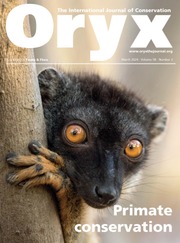Recent efforts to create artificial islands in the Szczecin Lagoon in the Oder estuary, Poland, demonstrate that appropriate environmental management can promote the expansion and stabilization of bird populations. These islands, created during a project to deepen the waterway to the port of Szczecin, have seen a dramatic increase in breeding birds, including species that are new to Poland.
The number of breeding birds on the islands increased from 185 pairs in 2021 to nearly 5,000 pairs in 2024. This increase underscores the effectiveness of protecting early successional stages of vegetation on newly established habitats. Among the most notable achievements is the first recorded breeding of the Caspian tern Hydroprogne caspia in Poland, with an incubating bird observed on 7 June 2024, marking the southernmost breeding site for this Baltic population.
Other bird species that have benefited from habitat conditions on the islands include the black-winged stilt Himantopus himantopus, a species previously uncommon in this region that has begun to expand from the south, and the pied avocet Recurvirostra avosetta, which usually breeds in in the Wadden Sea area but has expanded eastwards to these islands.
These changes are a response to the loss of natural habitats, partly driven by climate change. Creating new habitats that support early successional processes is crucial in combating biodiversity loss (Gómez-Serrano, 2024, Nature Ecology & Evolution, 8, 1201–1202). Birds respond quickly to environmental changes and therefore reflect the overall health of ecosystems. These increases in bird populations and the presence of new breeding species on these artificial islands is testament to the success of such interventions, and this model of integrating environmental restoration with infrastructure projects can serve as an example globally. Further management should focus on predator control and maintaining early successional stages to ensure long-term population stability (Marchowski et al., 2023, Ornis Polonica, 64, 273–287).
Two years ago, the Oder River, into which these artificial islands extend, experienced an unprecedented ecological disaster that resulted in the death of millions of animals (Marchowski & Ławicki, 2023, Oryx, 57, 9). The use of these islands by bird populations highlights the potential for ecological recovery.

Artificial islands in the Szczecin Lagoon, Poland: (a) Śmięcka and Brysna; (b) Brysna Island; (c) camera-trap image of a Caspian tern Hydroprogne caspia, a new breeding species in Poland; (d) chicks of the pied avocet Recurvirostra avosetta, a species that established a colony of 44 pairs in 2024, nesting ephemerally in this zone; (e) one of two pairs of black-winged stilts on Brysna Island in 2024. Photos: Maciej Sobieraj (a), Maciej Przybysz (b), Łukasz Jankowiak (c), Marcin Sołowiej (d) and Miłosz Kowalewski (e).


